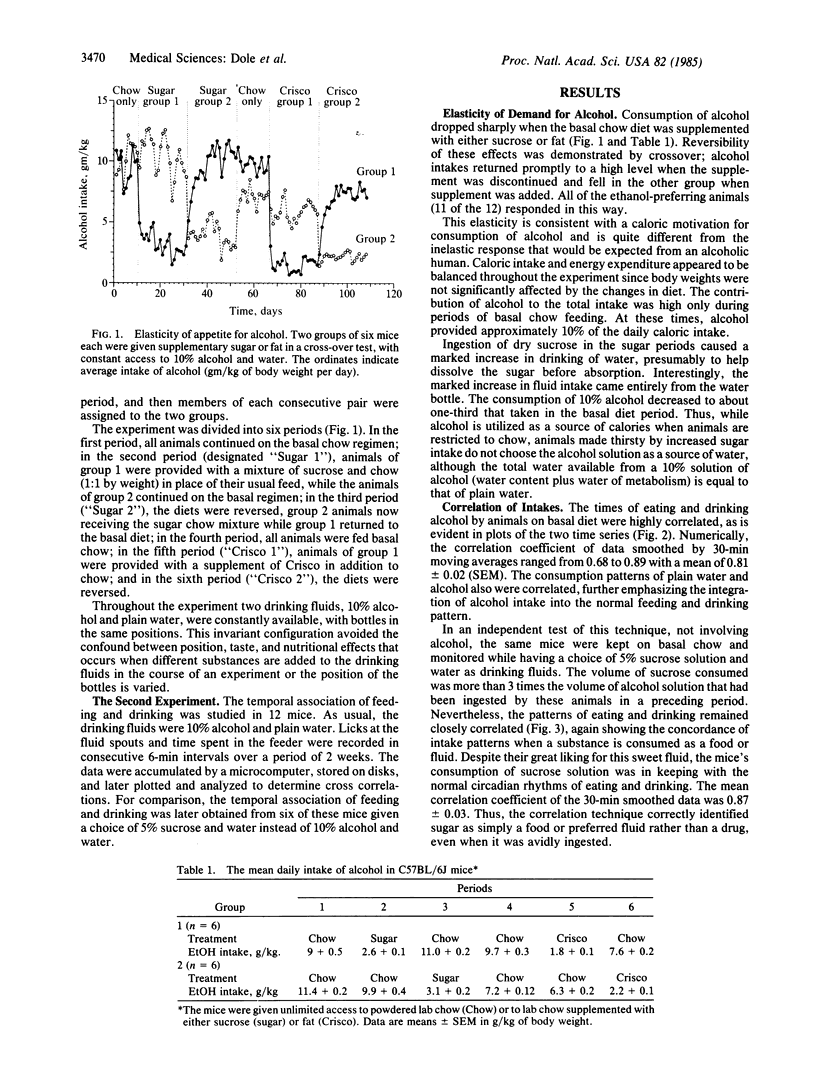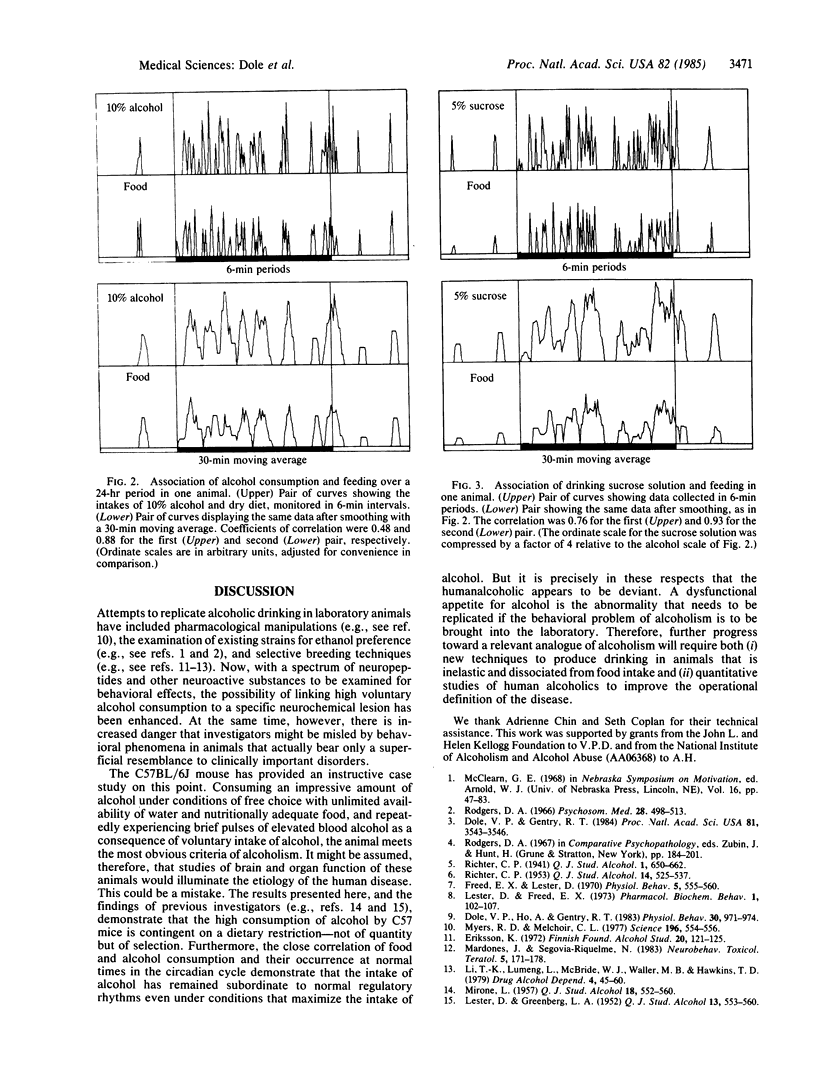Abstract
Two criteria of alcoholic drinking behavior--inelasticity of demand and dissociation of intake from normal eating and drinking--are illustrated by study of alcohol-preferring C57BL/6J mice. Although these mice drink enough to become intoxicated for brief periods each night, they do not meet the more rigorous criteria for pharmacologically motivated drinking. Their intake of alcohol was dramatically decreased when they were offered diets augmented with sugar or Crisco, and the temporal pattern of drinking was correlated with the intake of food. Thus, their motivation for drinking alcohol is related to nutrition and is not drug-seeking comparable to that of human alcoholics. Since the tests are simple and decisive, it might be useful to apply them to all putative models of alcoholism.
Full text
PDF


Selected References
These references are in PubMed. This may not be the complete list of references from this article.
- Dole V. P., Gentry R. T. Toward an analogue of alcoholism in mice: scale factors in the model. Proc Natl Acad Sci U S A. 1984 Jun;81(11):3543–3546. doi: 10.1073/pnas.81.11.3543. [DOI] [PMC free article] [PubMed] [Google Scholar]
- Dole V. P., Ho A., Gentry R. T. An improved technique for monitoring the drinking behavior of mice. Physiol Behav. 1983 Jun;30(6):971–974. doi: 10.1016/0031-9384(83)90264-0. [DOI] [PubMed] [Google Scholar]
- Freed E. X., Lester D. Schedule-induced consumption of ethanol: calories or chemotherapy? Physiol Behav. 1970 May;5(5):555–560. doi: 10.1016/0031-9384(70)90080-6. [DOI] [PubMed] [Google Scholar]
- LESTER D., GREENBERG L. A. Nutrition and the etiology of alcoholism; the effect of sucrose, saccharin and fat on the self-selection of ethyl alcohol by rats. Q J Stud Alcohol. 1952 Dec;13(4):553–560. [PubMed] [Google Scholar]
- Lester D., Freed E. X. Criteria for an animal model of alcoholism. Pharmacol Biochem Behav. 1973 Jan-Feb;1(1):103–107. doi: 10.1016/0091-3057(73)90062-2. [DOI] [PubMed] [Google Scholar]
- Li T. K., Lumeng L., McBride W. J., Waller M. B. Progress toward a voluntary oral consumption model of alcoholism. Drug Alcohol Depend. 1979 Jan-Mar;4(1-2):45–60. doi: 10.1016/0376-8716(79)90040-1. [DOI] [PubMed] [Google Scholar]
- MIRONE L. Dietary deficiency in mice in relation to voluntary alcohol consumption. Q J Stud Alcohol. 1957 Dec;18(4):552–560. [PubMed] [Google Scholar]
- Mardones J., Segovia-Riquelme N. Thirty-two years of selection of rats by ethanol preference: UChA and UChB strains. Neurobehav Toxicol Teratol. 1983 Mar-Apr;5(2):171–178. [PubMed] [Google Scholar]
- Myers R. D., Melchior C. L. Alcohol drinking: abnormal intake caused by tetrahydropapaveroline in brain. Science. 1977 Apr 29;196(4289):554–556. doi: 10.1126/science.557839. [DOI] [PubMed] [Google Scholar]
- RICHTER C. P. Alcohol, beer and wine as foods. Q J Stud Alcohol. 1953 Dec;14(4):525–539. [PubMed] [Google Scholar]


